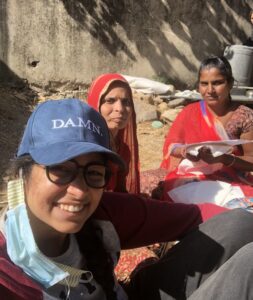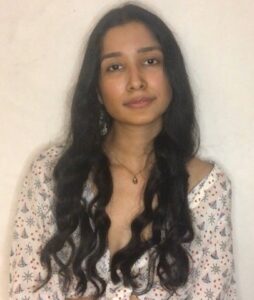Maati
Back to the very basic basics
Who is making the clothes?
Our fabric comes from the Ganai family in Murshidabad, Bengal. It is processed and stitched by the village family of Gajsinghpura near Jaipur and Lakhavali near Udaipur.
Life-cycle of products and how environmental concerns are addressed in these
The products are made from high-quality khaki or natural fibres. We have incorporated sustainability at various levels of production. We have special-count cotton which is mill-made but the wasted yarns are upcycled and made into the fabric that is used in our collections. The other part of the fabric is khadi, which is a very ecofriendly, water- and electricity-saver fabric. The fabric is transported to the village of Gajsinghpura, where the printing and dyeing is done with ecofriendly, chemical-free colours and is stitched by the women of the village.
We have tried to reduce and reuse wherever possible. If we are consuming new resources, then we are making sure they are 100 per cent from nature and biodegradable. For example, our buttons are made out of coconut and the tags are out of seed paper.
Challenges in scaling up sustainable fashion
A major challenge is to recover the costs incurred because many people find the products expensive. So, instead of trying too hard to sell, we should share knowledge and help people become more and more aware, which will eventually reflect in their choices.

Neha Kabra, founder, Maati
Things consumers should keep in mind
Consumers have the power to change the market. In the course of the pandemic, we have realised how little we need to live and that we can turn our focus on to quality rather than quantity. So, if more people start asking questions about how something is made, how can they decompose this something, what cycle their garment has gone through, that will be a big turn towards sustainable consumption. Asking questions about transparency will help in making conscious, better and mindful choices.
We are trying to provide sustainable clothing at affordable prices. People don’t think twice before spending on fast-fashion labels, so we are trying to compete with those kind of prices by cutting our profit margins. A constant goal for us is to make people more and more aware about how they can reuse and reduce the already available resources.
Womenswear: Tops, bottoms, dresses
Where available: maatibynehakabra.com; Instagram
Also on online fashion stores like Ogaan Market and Nykaa Fashion
Click on the pages below to continue reading about the brands.
And here's a checklist for responsible brands.
